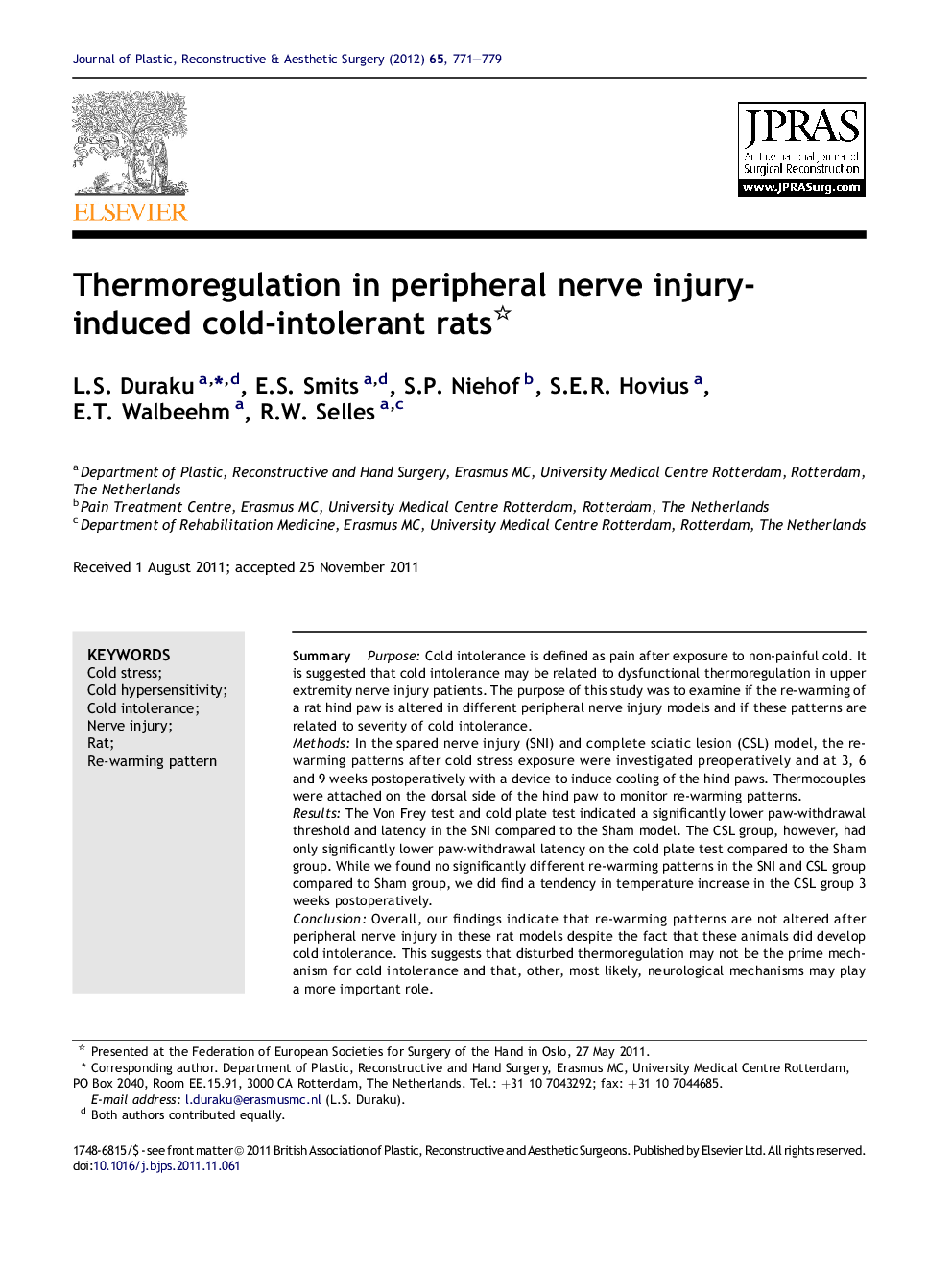| Article ID | Journal | Published Year | Pages | File Type |
|---|---|---|---|---|
| 4118454 | Journal of Plastic, Reconstructive & Aesthetic Surgery | 2012 | 9 Pages |
SummaryPurposeCold intolerance is defined as pain after exposure to non-painful cold. It is suggested that cold intolerance may be related to dysfunctional thermoregulation in upper extremity nerve injury patients. The purpose of this study was to examine if the re-warming of a rat hind paw is altered in different peripheral nerve injury models and if these patterns are related to severity of cold intolerance.MethodsIn the spared nerve injury (SNI) and complete sciatic lesion (CSL) model, the re-warming patterns after cold stress exposure were investigated preoperatively and at 3, 6 and 9 weeks postoperatively with a device to induce cooling of the hind paws. Thermocouples were attached on the dorsal side of the hind paw to monitor re-warming patterns.ResultsThe Von Frey test and cold plate test indicated a significantly lower paw-withdrawal threshold and latency in the SNI compared to the Sham model. The CSL group, however, had only significantly lower paw-withdrawal latency on the cold plate test compared to the Sham group. While we found no significantly different re-warming patterns in the SNI and CSL group compared to Sham group, we did find a tendency in temperature increase in the CSL group 3 weeks postoperatively.ConclusionOverall, our findings indicate that re-warming patterns are not altered after peripheral nerve injury in these rat models despite the fact that these animals did develop cold intolerance. This suggests that disturbed thermoregulation may not be the prime mechanism for cold intolerance and that, other, most likely, neurological mechanisms may play a more important role.Clinical relevanceThere is no direct correlation between cold intolerance and re-warming patterns in different peripheral nerve injury rat models. This is an important finding for future developing treatments for this common problem, since treatment focussing on vaso-regulation may not help diminish symptoms of cold-intolerant patients.
